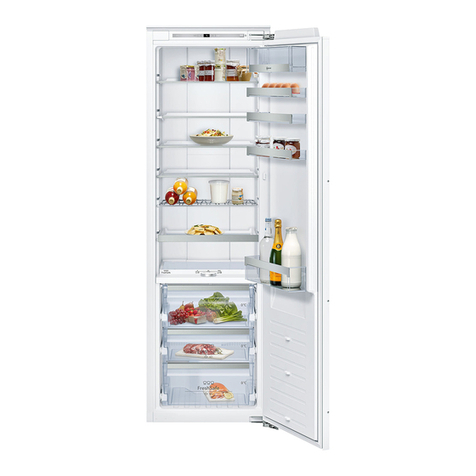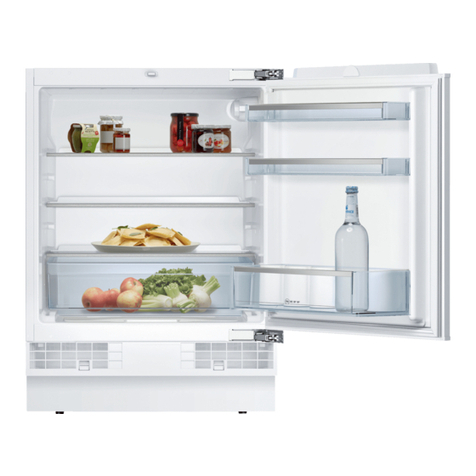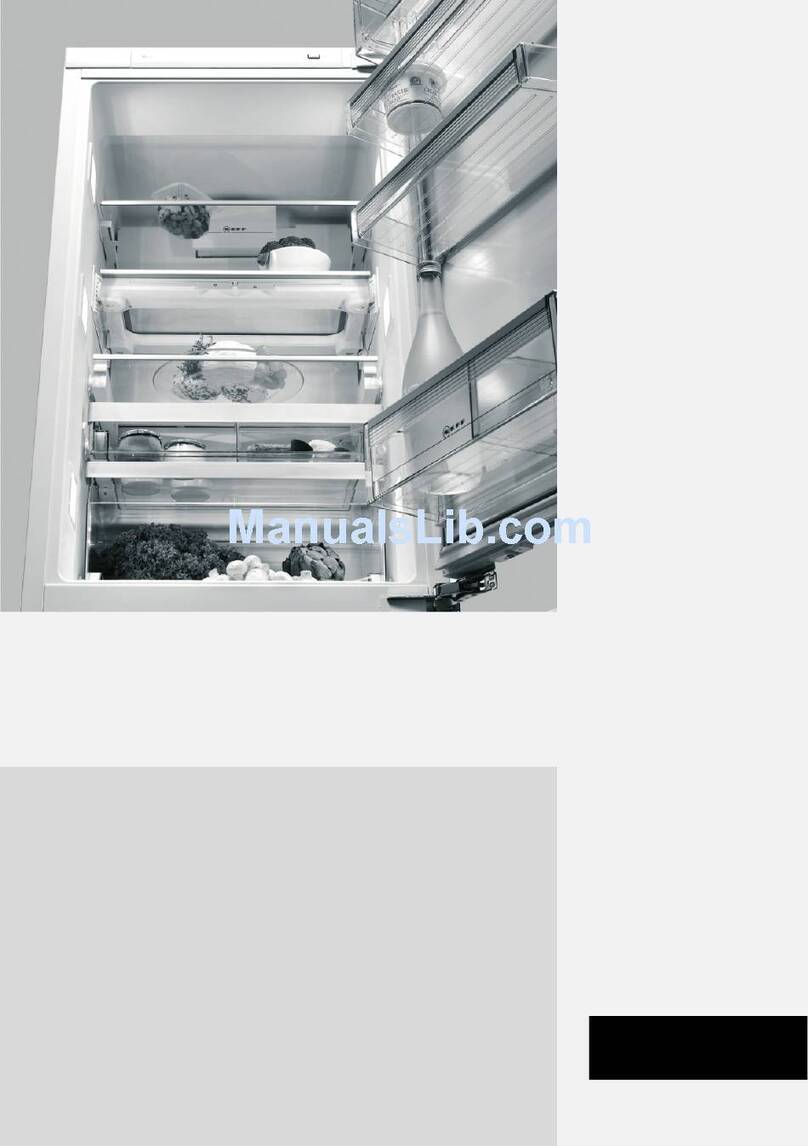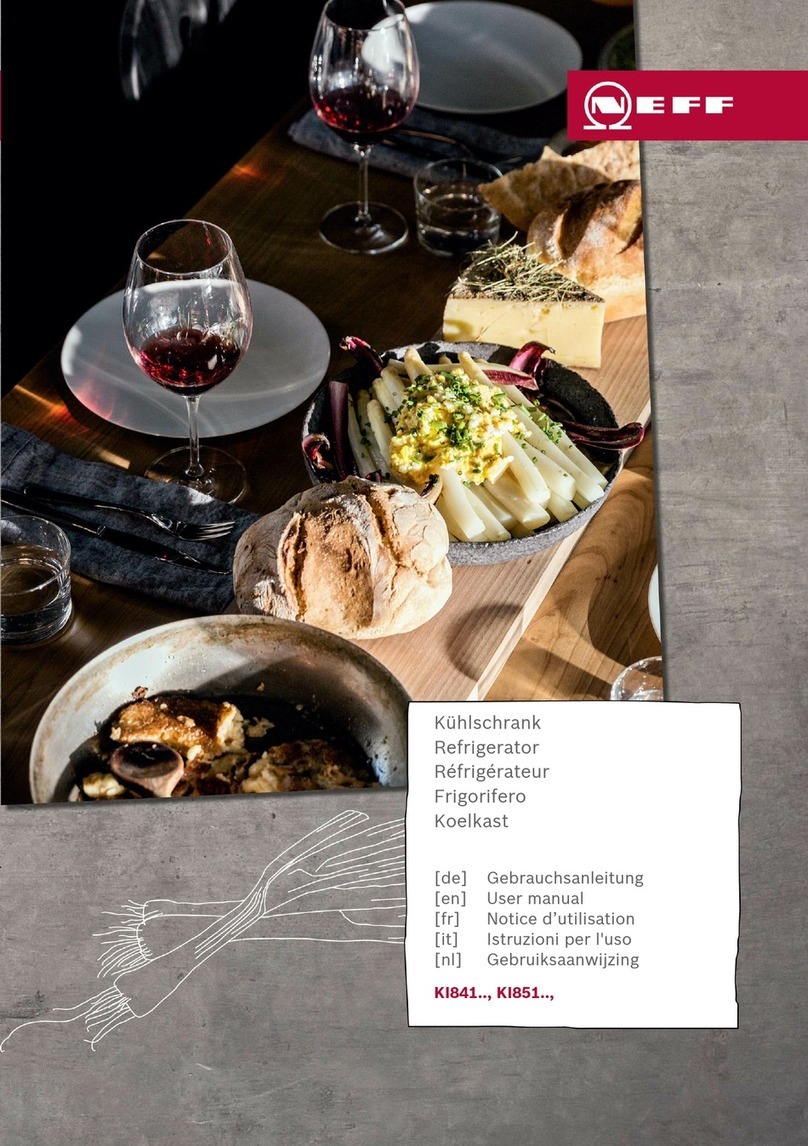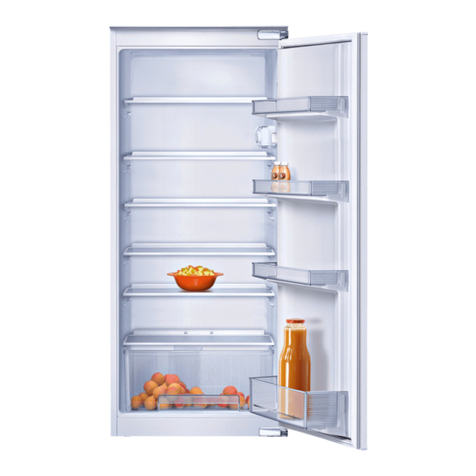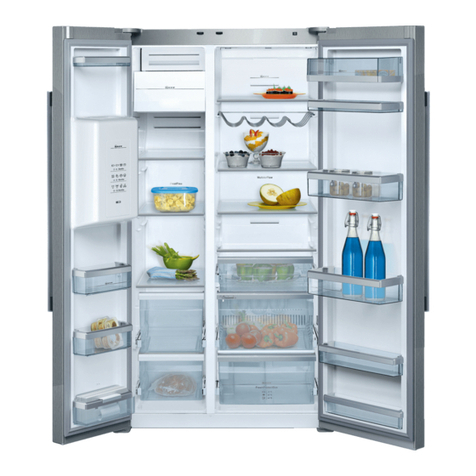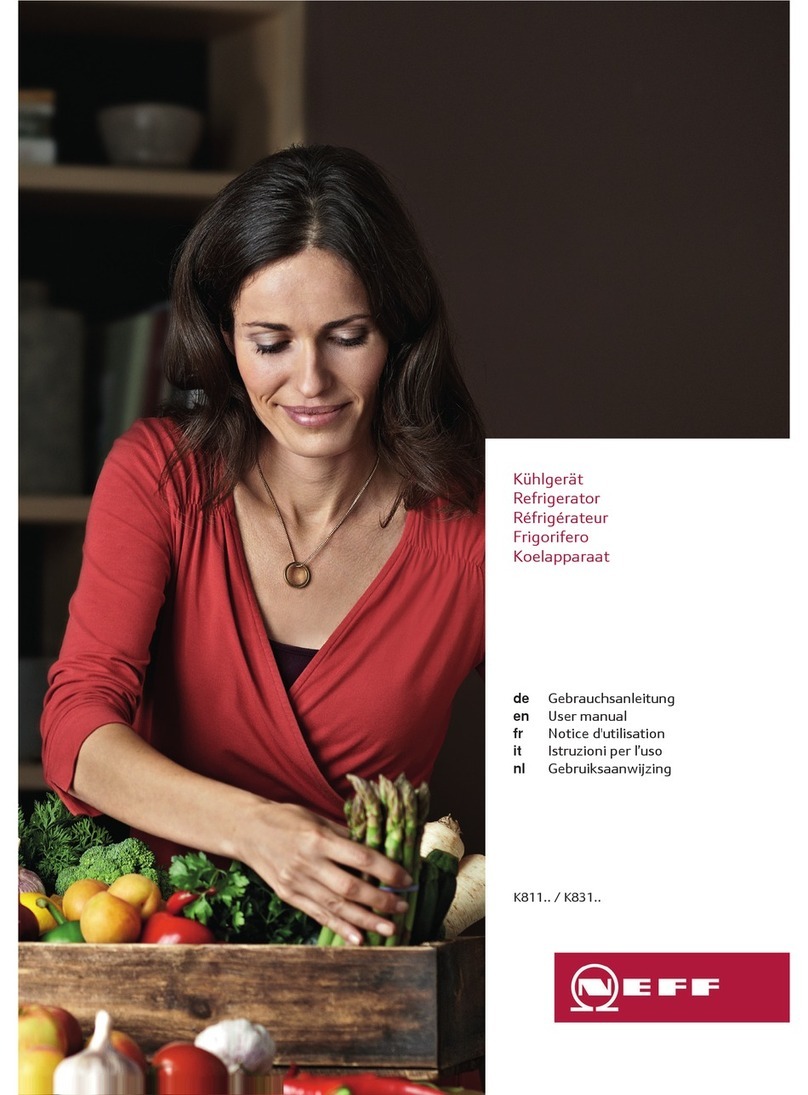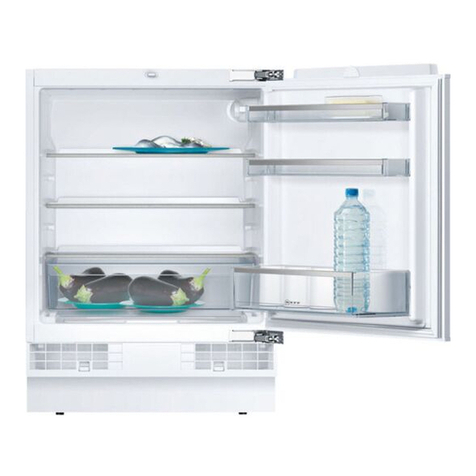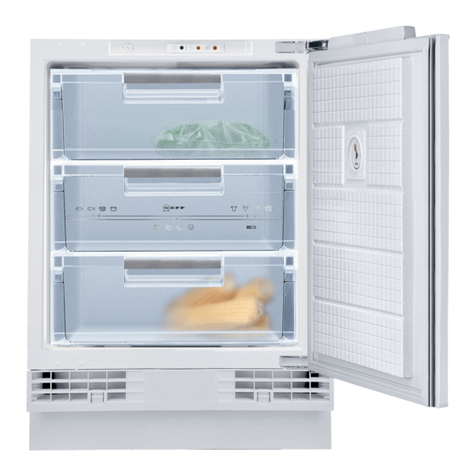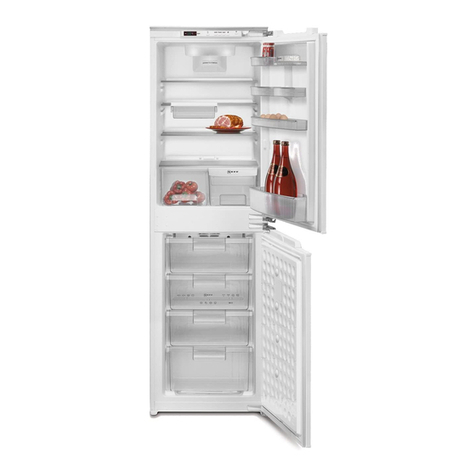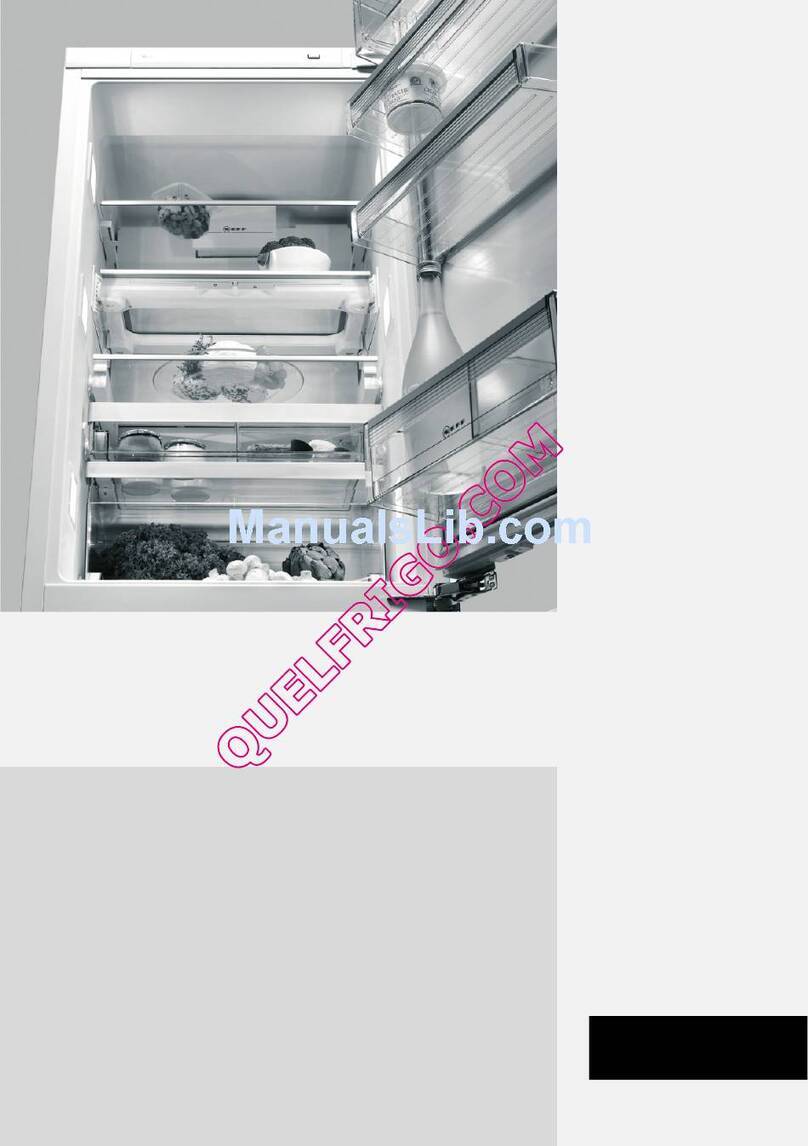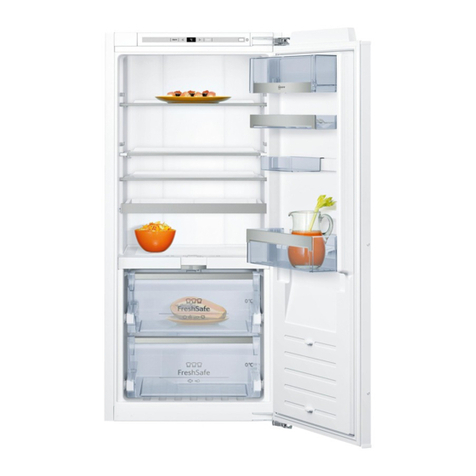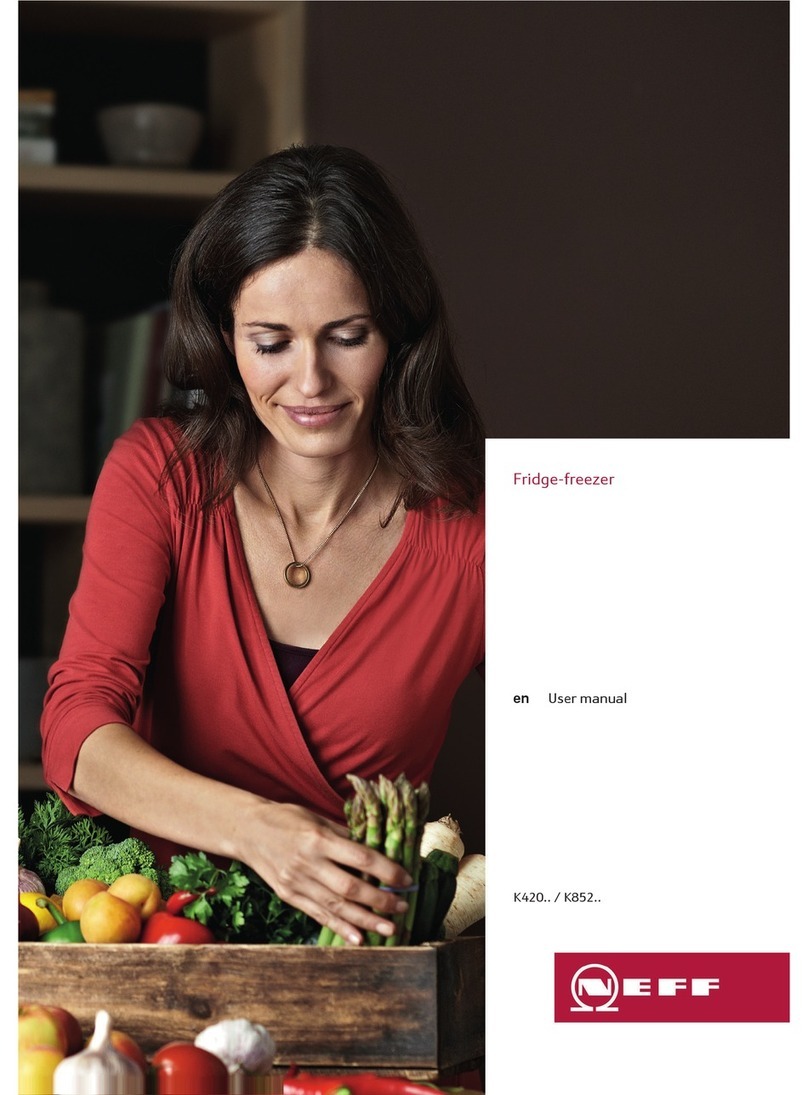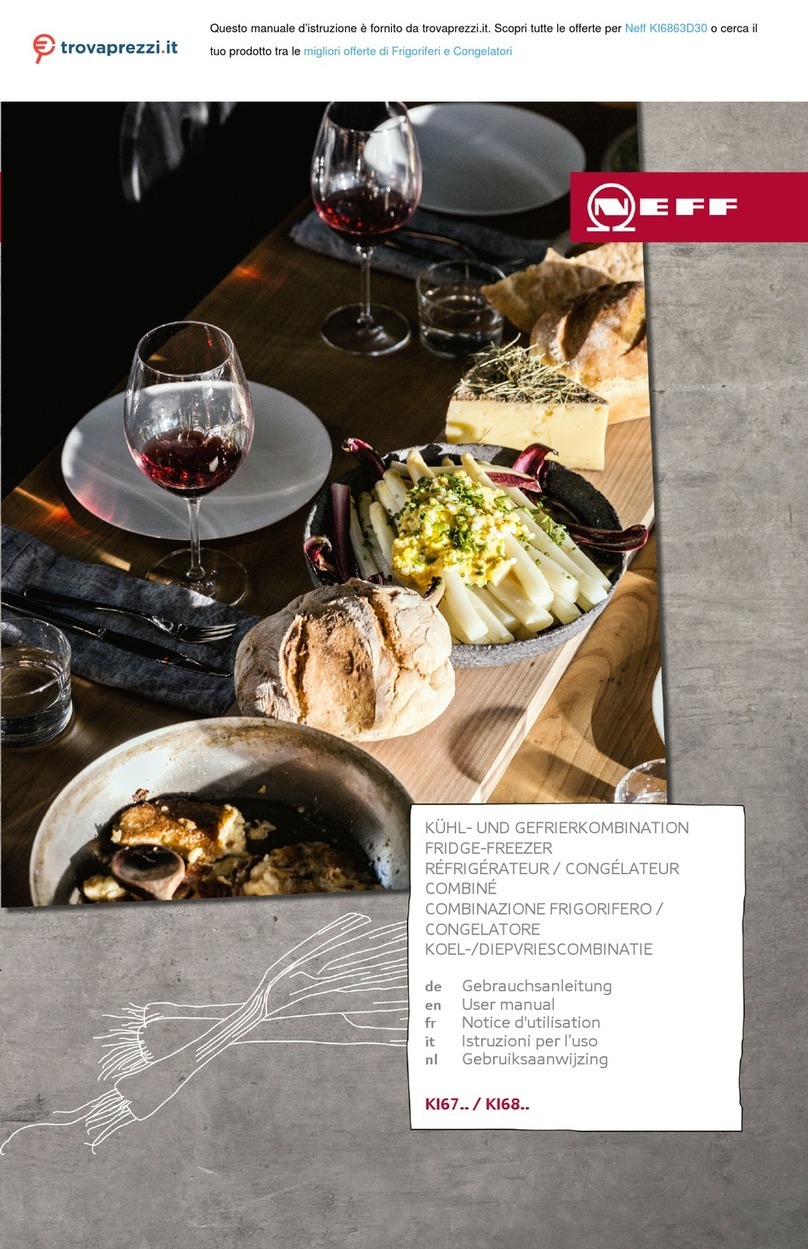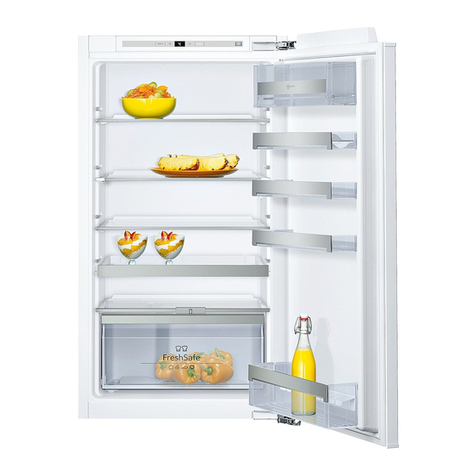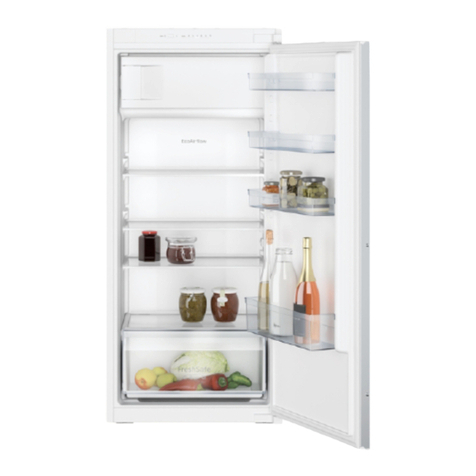3
Congratulations
With the purchase of your new fridge-
freezer you have opted for a modern,
high-quality domestic appliance.
The outstanding feature of your new
appliance is its low power consumption.
Each appliance which leaves our factory
is inspected thoroughly to ensure that
it functions properly and is in perfect
condition.
If you have any questions – particularly
concerning installation and connection
of the appliance – please do not hesitate
to contact our customer service.
Further information and a selection of
our products can be found on our home
page.
Safety and warning
information
Before you switch ON
the appliance
Please read the operating and
installation instructions carefully!
They contain important information
on how to install, use and maintain
the appliance.
Keep all documentation for subsequent
use or for the next owner.
Technical safety
mWarning
qÜáë=~ééäá~åÅÉ=Åçåí~áåë=~=ëã~ää=èì~åíáíó=
çÑ=ÉåîáêçåãÉåí~ääóJÑêáÉåÇäó=Äìí=Ñä~ããJ
~ÄäÉ=oSMM~=êÉÑêáÖÉê~åíK=båëìêÉ=íÜ~í=íÜÉ=
íìÄáåÖ=çÑ=íÜÉ=êÉÑêáÖÉê~åí=ÅáêÅìáí=áë=åçí=
Ç~ã~ÖÉÇ=ÇìêáåÖ=íê~åëéçêí~íáçå=~åÇ=
áåëí~ää~íáçåK=iÉ~âáåÖ=êÉÑêáÖÉê~åí=ã~ó=
Å~ìëÉ=ÉóÉ=áåàìêáÉë=çê=áÖåáíÉK
If damage has occurred
– Keep naked flames and/or ignition
sources away from the appliance,
– pull out the mains plug,
– thoroughly ventilate the room for
several minutes,
– notify customer service.
The more refrigerant an appliance
contains, the larger the room must be.
Leaking refrigerant can form a flamm-
able gas-air mixture in rooms which are
too small.
The room must be at least 1 m3 per 8 g
of refrigerant. The amount of refrigerant
in your appliance is indicated on the
rating plate inside the appliance.
Important information
when using the appliance
– Never use electrical appliances
inside the appliance (e. g. heater,
etc.).
Risk of explosion!
– Never use a steam cleaner to
defrost or clean the appliance!
The steam may penetrate electrical
parts and cause a short-circuit.
Risk of electric shock!
– Do not store products which
contain flammable propellants
(e. g. spray cans) or explosive
substances in the appliance.
Risk of explosion!
– Do not stand or support yourself on
the base, drawers or doors, etc.
– For cleaning and exchanging the
bulb, pull the mains plug out or
switch off the fuse.
Do not pull out the mains plug
by tugging the cable.
Warning: When the appliance is
switched off using the temperature
setting (Display: OFF), the supply
of current is not disrupted.
– Bottles which contain a high
percentage of alcohol must be
sealed and stored in an upright
position.
– Keep plastic parts and the door
seal free of oil and grease.
Otherwise, parts and door seal
will become porous.
– Never cover or block the ventilation
openings for the appliance.
– Do not store bottled or canned
drinks (especially carbonated
drinks) in the freezer compartment.
Bottles and cans may explode!
– Never put frozen food straight from
the freezer compartment into your
mouth.
Risk of low-temperature burns!
– Avoid prolonged touching of frozen
food, ice or the evaporator pipes,
etc. risk of low-temperature burns!
